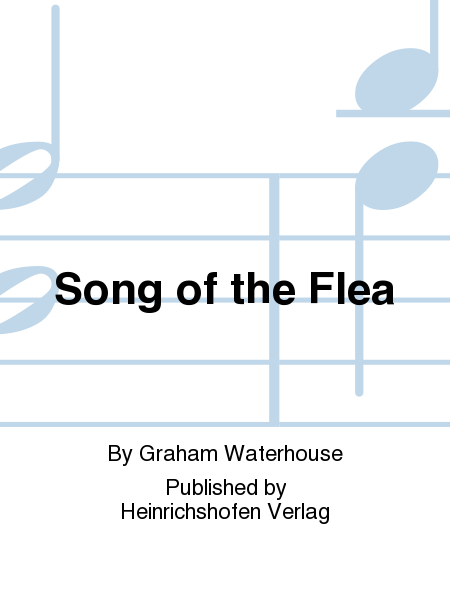Floh-Lied
FleaSong (2000)
Details
Description
SKU: PE.N2533
FleaSong (2000). Composed by Graham Waterhouse. Voice(s) & Various Instruments. Modern. Score. Heinrichshofen Verlag #N2533. Published by Heinrichshofen Verlag (PE.N2533)."The satirical text of 'Song of the Flea' is taken from Goethe's 'Faust' (Part 1) and is recited by Mephistopheles during the scene 'Auerbachs Keller in Leipzig'. During a visit to the Liszt House in Weimar I discovered that among the numerous settings of Goethe poems were also fragments of sketches by Liszt for 'Es war einmal ein Koenig' for bass, male-voice choir, and piano. The composition may have been intended for the Goethe celebration in 1849, though the date of the sketches remains uncertain. Liszt may have known Beethoven's setting of the text for voice, choir, and piano from 1810. The distinctive rhythmical scanning, the cynical under-current, and the downright nonsensical element of the text, recalling an English genre of nonsense-poetry, combined to prompt me into attempting a setting of the poem myself. The spoken part of 'Song of the Flea' may be recited either by a second person or by the cellist himself. The part should be declaimed with variety of expression and may carry a discreet hint of sarcasm. Attention should be paid to clear articulation and to the balance between voice and cello. The voice risks being covered, especially in the 'arco'-passages. The player can make use of different colors of pizzicato by plucking nearer the bridge or nearer the fingerboard. It is recommended that pizzicato notes on the C-string (stems pointing upwards) be played with the thumb. For the upper three strings (stems pointing downwards) the second or first fingers may be used. Some players may prefer to play the passages in bars 132 to 136 and 175 to 180 with the first finger. Unless otherwise marked, the note D in pizzicato passages is to be played with open string. Pizzicato notes should be allowed to vibrate. Towards the close of the work, the 'geangte' ('aggrieved') cellist slaps with the left hand irritatedly on his left knee, then on his left cheek, on his right shoulder, and finally, with his right hand, resolutely on the finerboard. Before slapping the fingerboard the bow is swiftly taken by the left hand and the A, D, and G strings damped with the same hand, so that only the C string vibrates. The 'Song of the Flea' was composed in Spring 2000 and was first performed on the occasion of the 70th birthday of Professor Reiner Thomssen, to whom the work is dedicated. The first public performance was in November 2000 in Delmenhorst." (Graham Waterhouse)

 Share
Share